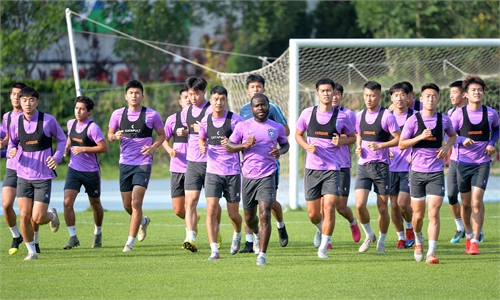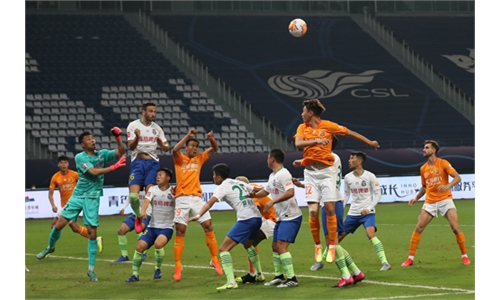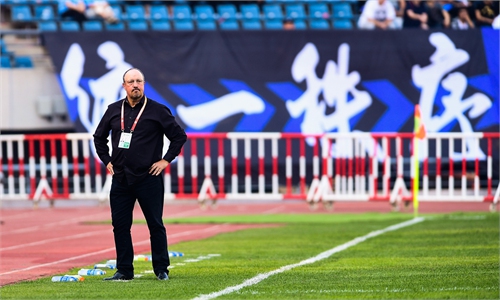ARTS / CULTURE & LEISURE
Newly rebuilt iconic Workers’ Stadium to be unveiled in Beijing
A next level
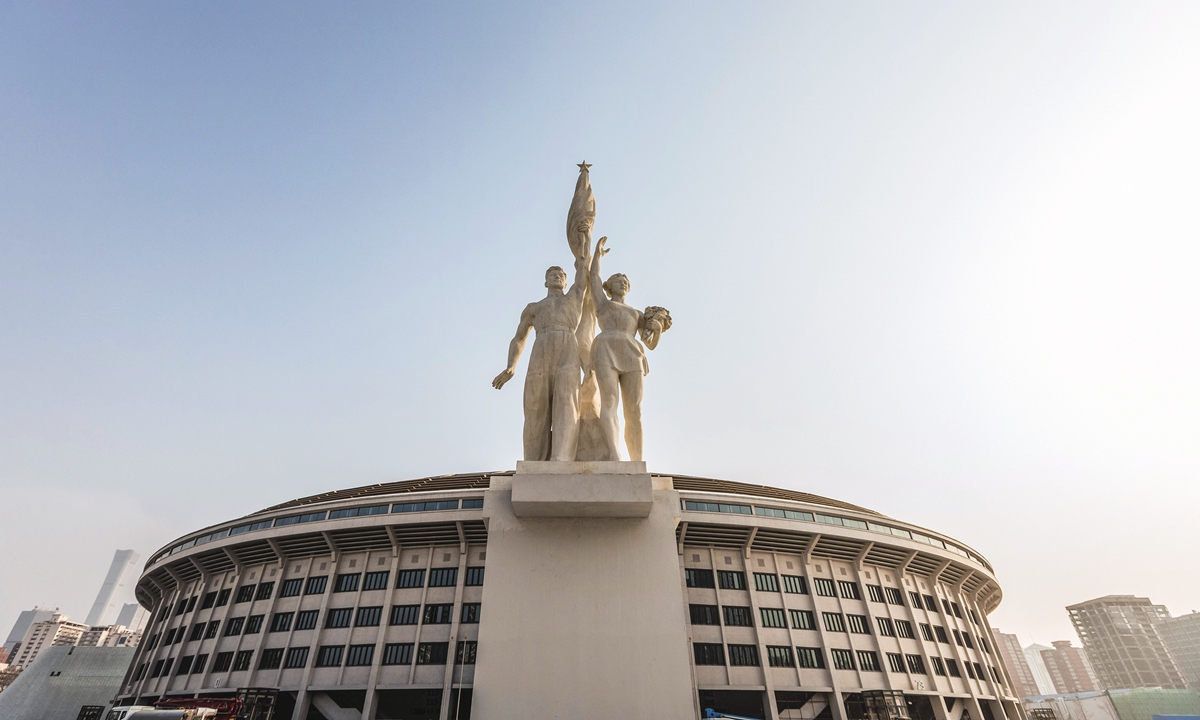
The iconic workers statue outside the new Workers' Stadium in Beijing Photo: Li Hao/GT
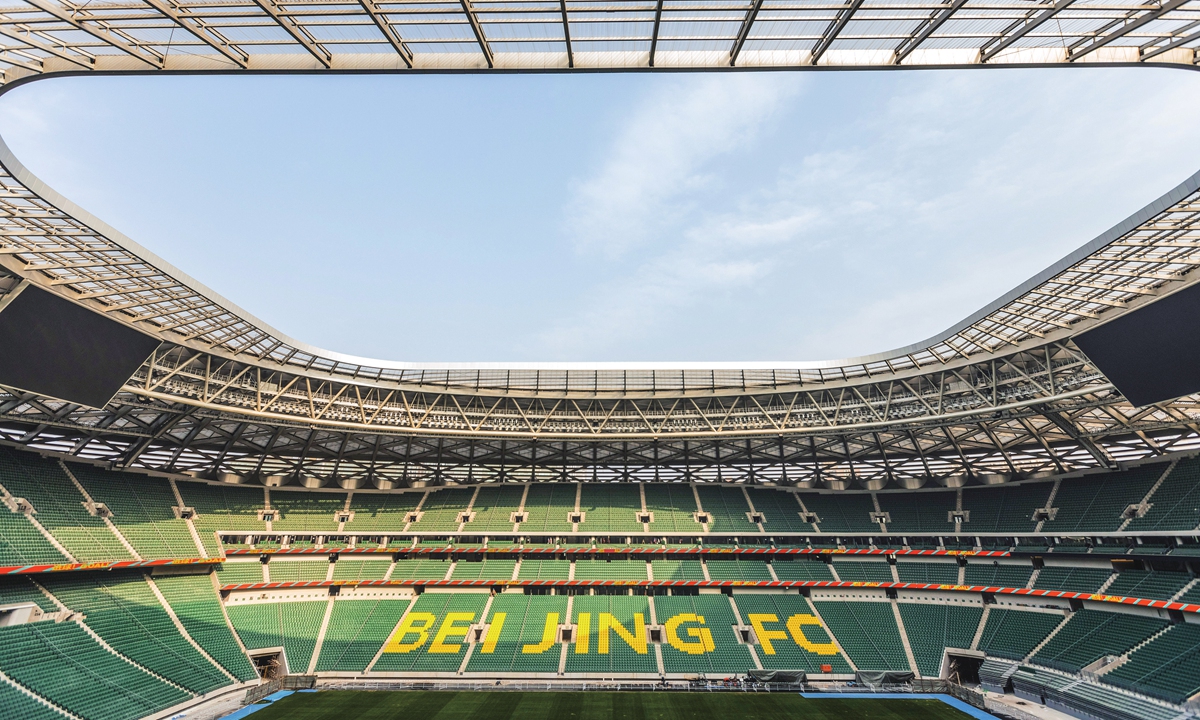
An overall view of the newly rebuilt Workers' Stadium Photo: Li Hao/GT
Located in downtown Beijing, the Workers' Stadium, commonly nicknamed by the fans and the public using its Chinese name abbreviation as Gongti, has also been labeled as a symbol of the history and progress of Chinese sports.
It was originally built in 1959 to celebrate the 10th anniversary of the founding of the People's Republic of China and to host the maiden National Games of that year.
Following that, the stadium has been witnessing many other historic moments, such as the 1990 Asian Games and the 2008 Summer Olympics.
Years passed, and the stadium went through four large-scale renovations to adapt to different requirements, but some safety concerns remained, which called for a rebuilding of the site in 2020.
After two years of construction, the stadium is expected to embrace the audiences again this year.
As the old external façade design is maintained, the interior, however, has been completely upgraded.
"The stadium carries memories from generation to generation," Song Peng, vice general manager of Sinobo Gongti which oversees the rebuilding program, told the Global Times. "The principle for rebuilding is to keep the exteriors unchanged but have the interior facility modernized."
Upgraded renovation
Originally the stadium was rebuilt to host the games of the 2023 Asian Cup, which was to be held in China, however, the Chinese Football Association conceded the hosting rights in 2022 due to the COVID-19 pandemic that hampered the preparation of the tournament.
The stadium's main function, since 1996, has been hosting the home games for the Chinese Super League (CSL) giant Beijing Guoan.
During the match days, fans of Guoan would flock to the stadium, where dark green - the color of the Chinese scholar tree - dominates the stadium seats.
The majority of the seats in the stands display the color, with a series of yellow ones sitting amid the green ones on the east side of the stadium spelling "Beijing FC," indicating the name of the home team who has brought glory and happiness to the place.
As the rebuilding of the stadium focuses on its original function of hosting soccer games, the elliptical running tracks have been removed, making the closest distance from the stand to the field of play only 8.5 meters.
"The view of the audience in the stadium has been widened as the stand has become steeper than before," Song said, noting a "cap" on the stands could also shelter the fans from rain as well as two giant LED screens hanging at the northern and southern sides of the stands.
The rebuilding also increased the stadium's capacity to 68,000, with adjustable seats available on the southern side of the stadium.
To help the attendants cope with the unbearable heat during the summer season, a cooling system has been set up in the stands.
The Workers' Stadium is set to be officially put into operation after mid-April as the stadium welcomes the 2023 CSL season.
The iconic statue of a male worker and a female worker located at the northern gate of the stadium will return to its place, along with the other eight sports statues surrounding the stadium, after renovation.
Apart from football and other sports events, the stadium also played as a host to the entertainment business, with many singers hosting concerts at Gongti along the years.
Football fans often complained that hosting such events would deal a blow to the quality of the grass.
But the renovation has also equipped the stadium with protection boards that can be installed before setting a stage, according to Song, which could minimize the damage to the grass.
As a building that witnessed over six decades of Chinese history, a museum is expected to be established inside the stadium to showcase the history of the stadium as well as Beijing Guoan's achievements in football.
Vitality hub
The area around the stadium was once considered a place full of energy, as it features restaurants, pubs and malls. However, the pandemic and the reconstruction had paused the nightlife in that area.
Before the pandemic, life in the area often came with traffic congestion, especially on the days when the stadium was hosting events. Now the development of public transportation provides visitors with a new option to the stadium: the subway.
The Beijing Metro Line 3 and Line 17 are designated to converge at the northeastern side of the stadium. The Gongti station on Line 17 is expected to be put into operation at the end of 2023.
"The surrounding area will be established as a city park," Song told the Global Times, adding that the 30,000-square-meter lake toward the south side of the stadium will remain in place.
A skate park and other exercise facilities will also be placed in the area as well as a shopping mall, this landmark building of the city is deemed to restore its pride and again become a vitality hub.
